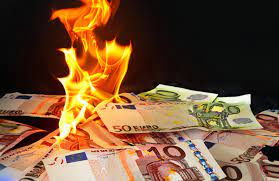LAG Equalisation of Burdens Act 2024
The current legal situation
The LAG of 1948, which came into force in 1952 and was last amended in 1969, is the basis of the current law, which mainly relates to war damage.
On 12 December 2019, the situation changed once again. This time, the terms were changed.
The LAG was integrated into the XIV Social Code on Compensation Law (SozERG). It now stipulates that not only war victims have a right to compensation, but also so-called socially aggrieved persons. This law has been in force since 1 January 2024.
SGB XIV lists the current groups of people who are socially disadvantaged and for whom the state bears a particular share of responsibility for harmful events.
- 1 para. 2 SGB XIV lists the damaging events:
§ 1 SGB XIV
Para. 2 - Harmful events are:
1. acts of violence (psychological or physical) such as terrorist attacks
2. effects of both world wars
3. events in connection with the performance of civilian service
4. vaccinations or other measures of specific prophylaxis which are
have caused damage to health.
5. victims of the SED regime
Is that something to worry about?
Is the property owner or even the entire estate at risk?

Threat - Danger - Hazard - Risk - Uncertainty -
"Danger refers to the possibility that an event, an object or a substance can cause damage. RiskDenotes the probability that the Danger leads to damage".
The development of burden sharing has been influenced by various political, social and economic factors. Migration policy, the coronavirus pandemic and the Ukraine wars are just some of them.
However, if one considers the laws discussed in context alone, it becomes clear that it is at least legally possible to oblige landowners to compensate for extended damage such as vaccination damage
A comprehensive database is essential in order to be able to implement burden equalisation. This includes, for example, the number of properties, their owners, the size of the living spaces, etc.
Where does the data come from?
It is not unreasonable to assume that "the politicians" have a plan to introduce a wealth tax that is hidden from the public.
The financing of the Equalisation of burdens takes place through a Equalisation levywhich is a capital levy.
In view of the numerous crises and the associated burdens on citizens and state budgets, political players - individuals, political groups and parties - are repeatedly calling for a wealth tax as an instrument to tackle the problem.
If many voices in the network are to be believed, the introduction of a wealth tax is imminent.
The asset register, known as the "European Asset Register", is intended to record who owns which assets. Assets such as precious metals, real estate, cryptocurrencies, company shares, stocks and savings are recorded.
The official line from politicians is that the asset register is intended to combat corruption and money laundering. However, it is obvious that political voices are calling for an asset levy. There have been calls from the so-called "left-green" camp - from individuals as well as parliamentary groups and the parties themselves - which have been heard and read time and again, especially since the financial and banking crisis.
Securing assets
Although it is not yet clear whether the Equalisation of Burdens Act will be implemented, it is extremely important to be aware of the potential impact.
Understanding and preparing for this risk can be crucial to avoid severe stress.
One thing is certain, the more time passes, the fewer ways out are realisable or fully efficient.
To find out more, purchase our e-book.

Help with the realisation of a possible solution is offered by the company Mellon Star.

Get up to 50% of the e-book price back as cashback when you place an order.
Get your promo code at Book Download.

